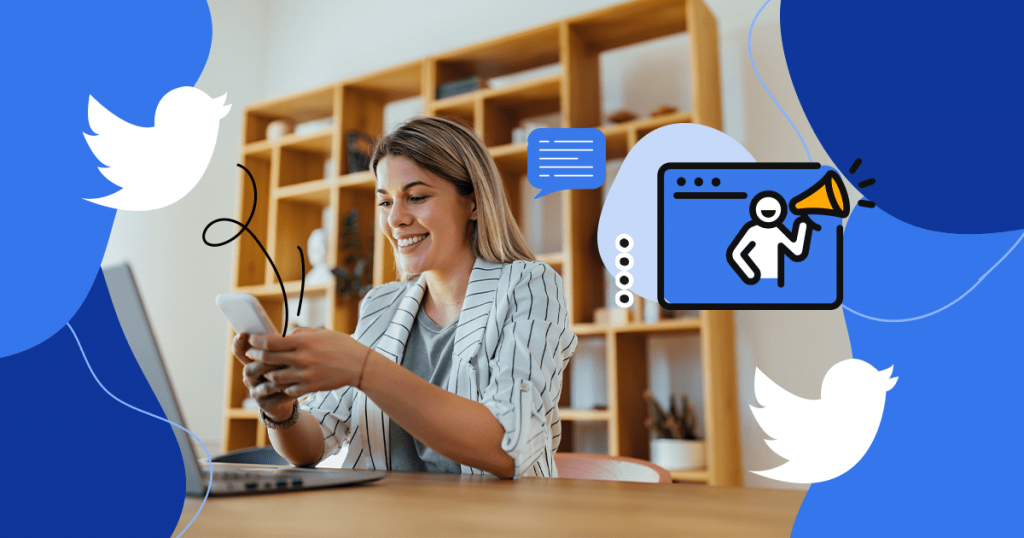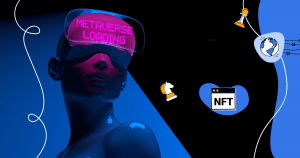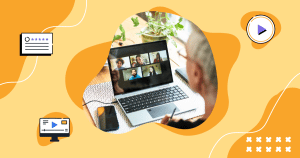It’s a foregone conclusion that businesses today need to invest in social media marketing.
Social media helps businesses gain authority as a brand and thought leaders, promote campaigns, generate leads, and boost brand awareness.
Twitter is unique from other platforms because of the limited characters permitted in a tweet, which tends to lead to quick, conversational updates from brands.
It’s also a great platform for tracking current events through hashtags and threads, making it easy to live tweet about current and cultural events and even your own brand’s virtual or in-person events.
- But what exactly is live tweeting?
- Why is it worth the effort?
- And how do you live tweet successfully during your events?
In this article, we’ll walk through all of these questions and help you understand the benefits of a live tweeting strategy in your social media marketing.
- What is Live Tweeting?
- Why Should You Live Tweet?
- How to Live Tweet an Event
- Wrap Up
What is Live Tweeting?
Twitter is the go-to platform for events. It’s easy to track what’s going on with the use of hashtags, and the limited character count lends itself to multiple, quick updates rather than an end-of-event summary.
Live tweeting is the practice of sending out a series of tweets during an event that gives near real-time updates to followers.
It lays out a story piece by piece and keeps readers following to find out what’s happening next in your thread.
When you live tweet an event, it allows you to share important information like:
- Speaker highlights
- New ideas
- Conversations
- Important updates
- Images
- Videos
- Memes and GIFs
- Real-time observances
Why Should You Live Tweet?
Live tweeting has many benefits for brands hoping to promote and start conversations about their events.
If you live tweet an event, it can generate interest in the event itself and the organizations that are running, sponsoring, or participating in the event.
That means that knowing how to live tweet has many different benefits for your brand and your events.
Brand Awareness
One of the biggest benefits of live tweeting is the increase in brand awareness.
When your brand is live tweeting events using hashtags, anyone following the event hashtag or another Twitter account that is using the event hashtag can see your tweets.
And, if you have a large audience liking and retweeting your live tweeting, you can get in front of new audiences and potential followers.
Audience Engagement
When you send out a single tweet, you can be lost in your follower’s feeds and have only a single post through which your audiences can engage with you.
When you are live tweeting, you are sending out a series of tweets that your audiences can engage with.
And when you live tweet, your tweets are filled with real-time, new information that your followers can engage with.
Lead Generation
Live tweeting an event helps get your brand in front of new audiences.
That increases the odds of those new viewers following your social accounts, visiting your website, and joining your sales and marketing pipelines to eventually become customers.
After you live tweet, you can see your follower count increase, your website traffic jump, and get more hits on your landing pages.
How to Live Tweet an Event
On the surface, it may seem easy to live tweet. Just start sharing updates from your event on your Twitter account, and the benefits will follow, right?
In truth, successfully knowing how to live tweet requires you to have a thought-out strategy that takes each step of the process into account.
These steps will help you improve your live tweeting and social media marketing strategies for your events.
1. Prepare for the Event
The first step of your live tweeting strategy is to plan for the upcoming event.
When you live tweet, you want to be able to get your content out there as quickly as possible so that you are tweeting in real-time.
Creating templates ahead of time for images or graphics can help you get high-quality content out as soon as you need it.
You’ll also want to organize your internal team so you know who is sending out tweets, who is responding to comments or mentions.
It’s also a good idea to know your schedule inside and out so you can prepare for tweets in advance rather than struggle to keep up.
You might even want to try getting speaker presentations or scripts in advance to plan what tweets you want to plan for.
2. Pick Your Webinar Hashtag
The hashtag for your event is the number one tracking tool and search term that followers will use for the event.
You want to make sure that your hashtag is short, so it doesn’t take up the limited character count on tweets.
It’s also important to make sure that it is easy to spell so anyone using it can use it correctly and unique so it doesn’t get mixed up with other conversations.
3. Promote Your Live Tweeting Plan
Your audiences should know that you are planning to live tweet well in advance of the actual event.
Promoting your live tweeting plan is just as important as promoting the rest of the event.
This lets followers know to tune in at the right time and encourages more audience engagement.
4. React and Respond to Engagement
When you get that precious engagement from your followers, you need to be able to respond quickly and keep the conversations going.
Having a moderator or another team member available to respond to those comments as you live tweet is a great way to encourage even more interactions on your posts.
5. Share Different Kinds of Content
Just posting text updates can be boring for your audiences.
Try mixing up the kinds of content you post to keep people interested in your live tweeting stream. Different types of content can include:
- Images and videos
- Quizzes or polls
- Open-ended questions
- Graphics and supporting infographics
- Memes and GIFs
- Text posts of different lengths
6. Ensure Every Tweet Provides Value
You don’t want to fall into the trap of tweeting just for the sake of tweeting.
Your live tweeting is meant to help audiences learn important and helpful information from your event.
If that means waiting a while between tweets, you’ll be providing more value than just sending out tweets that people don’t have any investment in reading.
If you don’t provide value to your audiences, they might lose interest in your live tweeting feed and drop off their engagement.
7. Shout Out and Tag Influencers
Influencers are a great resource and partnership for your brand during an event.
By shouting out influencers and tagging them in your tweets, you can bring in their audiences as well, even if they weren’t a part of the event or aware of your brand.
You can also try shouting out to some of your followers or other event attendees who are using your hashtag.
8. Thank Your Followers
After the event and your live tweeting has ended, you want to wrap up your stream and end the live tweeting session clearly.
Thanking your followers is a great way to officially end your live tweeting stream and show appreciation to those who have been following you for the entirety of the event.
9. Promote Any Recordings
Your work isn’t done once the event has ended.
Use the momentum from your live stream to promote any recordings you have from your webinar and give your audiences a clear CTA in order to join your system and become a part of your pipelines.
This also provides additional value to your loyal followers who weren’t a part of the event.
10. Repurpose Your Tweets
The tweets from your live tweeting session have tons of helpful information and key talking points from your event.
Taking that information and repurposing it is a great way to get the most out of your efforts.
You can create a follow-up blog or email for audience members, or post the tweets on your Instagram or Facebook stories.
Wrap Up
Managing social media requires brands to be aware of many different techniques and strategies that can help them achieve their goals and communicate clearly with followers and potential leads.
That allows a brand to have a strong presence on social media and get in front of its audiences naturally.
Live tweeting can help brands promote their events, connect with audiences, and increase brand awareness through social media.
By taking these tips into consideration and working on expanding your social media strategies to include live tweeting, you can help improve the impact your events have on your audiences and followers.
Knowing how to live tweet is a great skill, but there are other ways to directly connect with audiences during events.
Q&A sessions are fantastic for events that have speakers who can answer important audience questions. To learn more, check out our blog on live Q&A!









